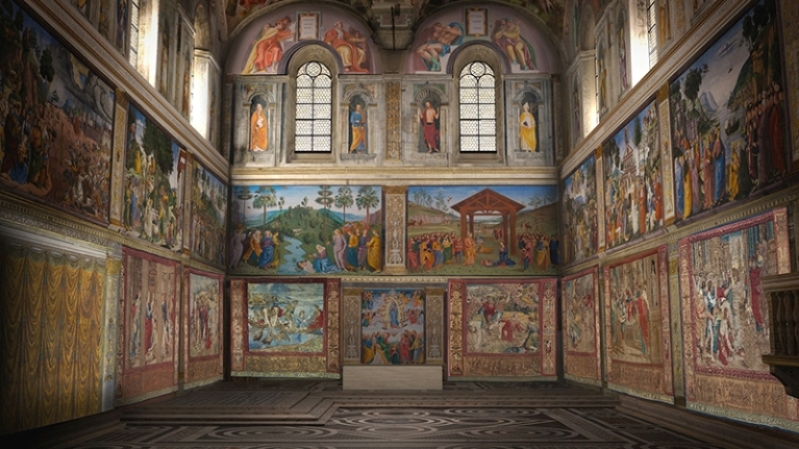
Most people know Renaissance painter and architect Raphael Sanzio simply as the "Raphael" who covered the walls of the pope's Vatican palace in elaborate frescoes and filled the Sistine Chapel with tapestries modeled on his designs. Now, a new film celebrates and shares his creations with a larger audience.
Titled "Raphael - Prince of the Arts," the film features Italian actor Flavio Parenti playing the role of Raphael, while other actors portray Leonardo da Vinci and leading artists of the era 500 years ago. The film accentuates more than 40 of Raphael's masterpieces, with close-up views.
The film, which is being produced by the Vatican Museums and media partners Sky and Nexo Digital, with the backing of the Italian cultural ministry, is being hailed as the next closest thing possible to standing in front of the artist's works.
Sanzio died in 1520 at the age of 37. He is buried inside the Pantheon in central Rome. He led a "nomadic" life, working in various centers in Northern Italy, but spent a good deal of time in Florence, perhaps from about 1504.
The film takes viewers into the pope's private palace, and also recreates parts of the artist's life from the era in which he lived, reports Religion News Service. The movie includes information from his childhood in the small town of Urbino . Some of the scenes were shot in the rooms where he painted his most famous fresco, "The School of Athens," which features nearly all of the ancient Greek philosophers.
Barbara Jatta, director of the Vatican Museums, called the movie "a perfect synthesis" of art, technology and cinema.
The film will be released in Italy in April, and eventually shown in 60 countries, including the U.S., where a September release is planned.
Antonio Paolucci, a former director of the Vatican Museums and one of the art historians featured in the film, encouraged everyone to look at Raphael's final work, "The Transfiguration," which is featured in the film, reports The Gazette.
"This is the masterpiece of all masterpieces," Paolucci said. "Before he lost consciousness, his final brush was on 'The Transfiguration.' Nothing compares with it."
Interesting, the artist was born on Good Friday in 1483, and died on Good Friday in 1520.
He was still seen by 20th-century critics as the "most famous and loved" master of the High Renaissance, some argue he was overtaken by Michelangelo and Leonardo in this respect.







